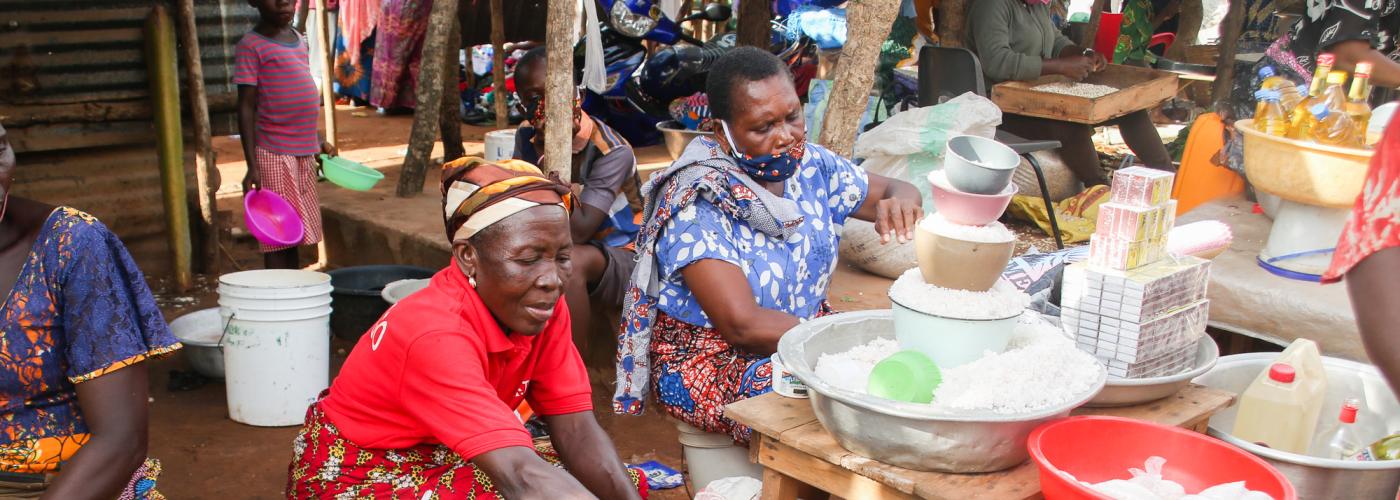Beyond Economic Growth: Rethinking the Path to Global Food Security
Image

Does economic growth improve food security? The short answer is no.
Although mainstream economics suggests that sustainable economic growth is essential for ensuring global food security, empirical evidence is mixed, at best. Over the past decade, the world saw notable economic growth with decreasing global economic inequality between countries, yet food insecurity continued to rise.
CARE’s research finds that gender inequality and income inequality are the most consistent predictors of food insecurity. In fact, contrary to mainstream belief, economic growth can have an adverse impact on food security, especially post-pandemic.
A broader perspective
Globally, the struggle against food insecurity has emerged as a huge challenge. In 2022, more than 735 million people in the world were hungry. That is 1 in 11 people worldwide. Despite progress in some countries in 2022, hunger and food insecurity grew in many regions around the world- especially Africa and the Middle East.
CARE’s analysis of data across 113 countries shows that improving GDP is not enough. In 57 countries where GDP is growing, food insecurity is also rising. This means a more comprehensive and nuanced understanding of food insecurity and economic growth is imperative.
This challenges the assumption that we must focus on economic growth and food supplies first in a crisis and think about equality later. In fact, directing resources toward women and girls is an effective strategy to alleviate existing food crises and avert future ones. Moreover, CARE’s research suggests the need to broaden our perspective beyond a singular focus on growth and to prioritize both equality and growth.
Where is it happening?
The gender food gap is 15 million in North America and Europe – more than double of what it was in 2019. In Africa, 10.4 million more women compared to men are hungry. The data shows that even looking at countries in different income brackets, gender inequality always correlates with higher food insecurity.
Before COVID-19, in Low-and Middle-Income Countries (LMICs), a country that had complete gender inequality would expect to have 76 percentage points more moderate and severe food insecurity than countries with total equality between men and women, controlling all other factors. After COVID-19, that number rose to 82 percentage points. Globally, before COVID-19, a country with complete gender inequality would have 65 percentage points more moderate and severe food insecurity than one where women and men were completely equal, controlling for all other factors. This rose to 77 percentage points more moderate and severe food insecurity after COVID-19.
How can we solve it?
As stated above, CARE’s research shows that the global hunger crisis cannot be addressed with economic growth alone without addressing gender inequality. Gender equality in the global workforce could create $28 trillion for economic growth. Closing the gap for women entrepreneurs, including gaps in access to finance, could add $5 trillion to the global economy. In emerging markets, closing the finance gap for women run enterprises would increase incomes by an average of 12%.
For this, it is crucial to understand the complex interplay that governs the relationship between economic growth and gender inequality. This requires us to think out of the box and invest in women.
At the policy level, it is crucial for global strategies and national policies to set targets to equality in economic growth. At the execution level, gaps between men and women in private and public should be narrowed down by using proven tools and approaches, promoting decent, equitable work across food systems and taking steps to reduce growing gender gap in the future of work.
In financing, investing in women leaders and women-led organizations is key along with providing accessible financial services and digital services that reach the most marginalized.
Overall, it is important to recognize that we cannot strive for a food secure world without addressing gender inequality.



